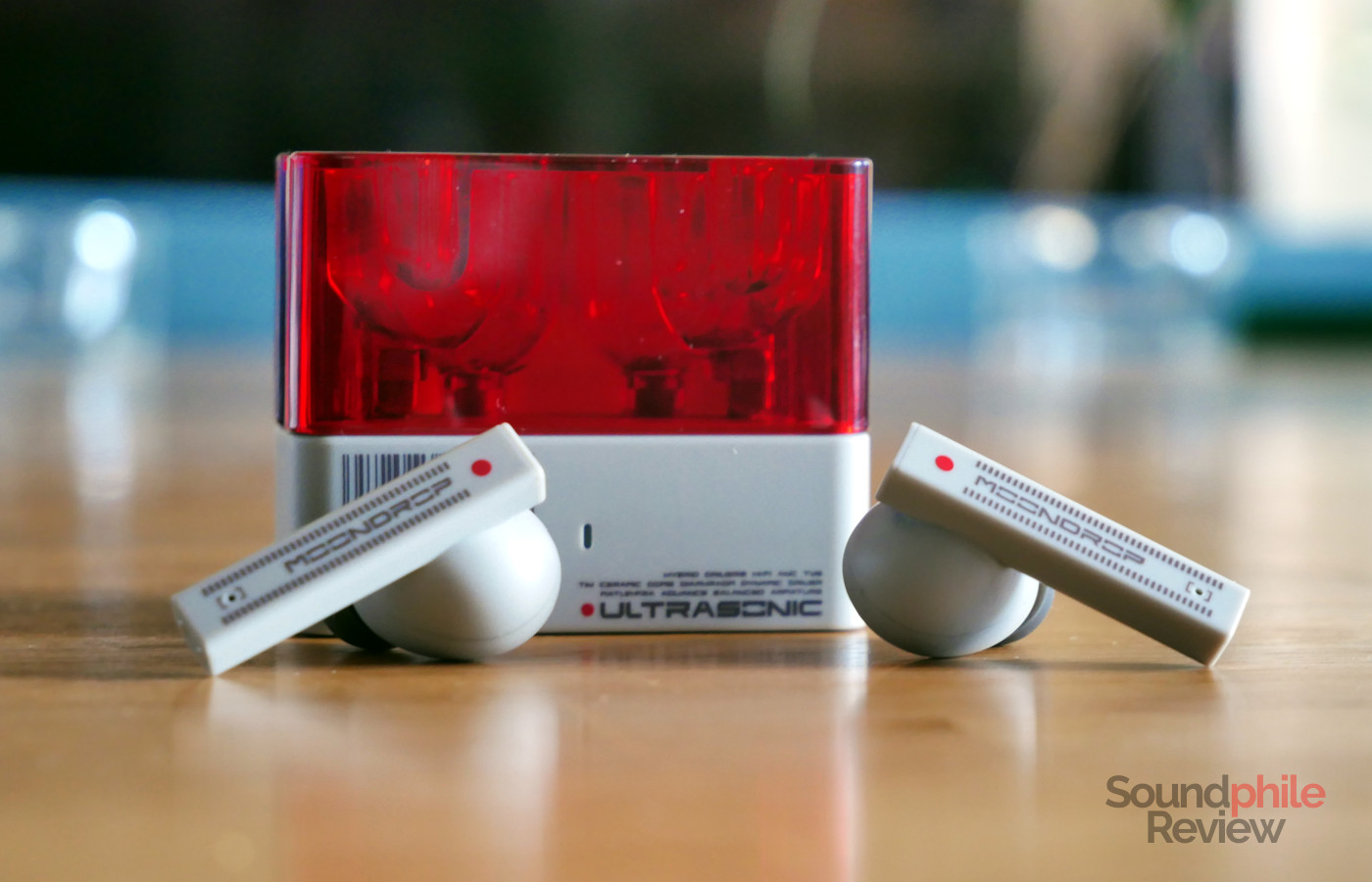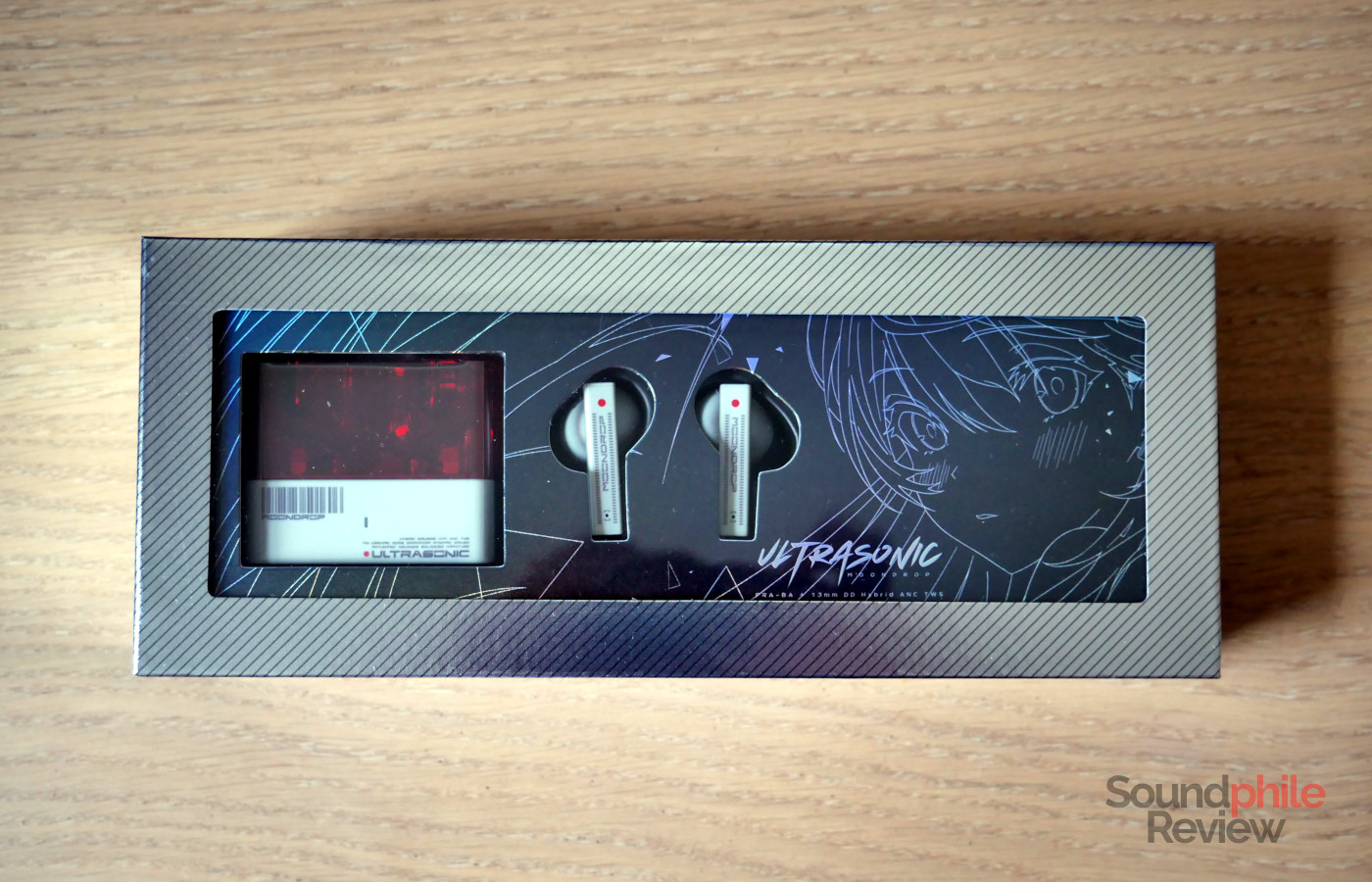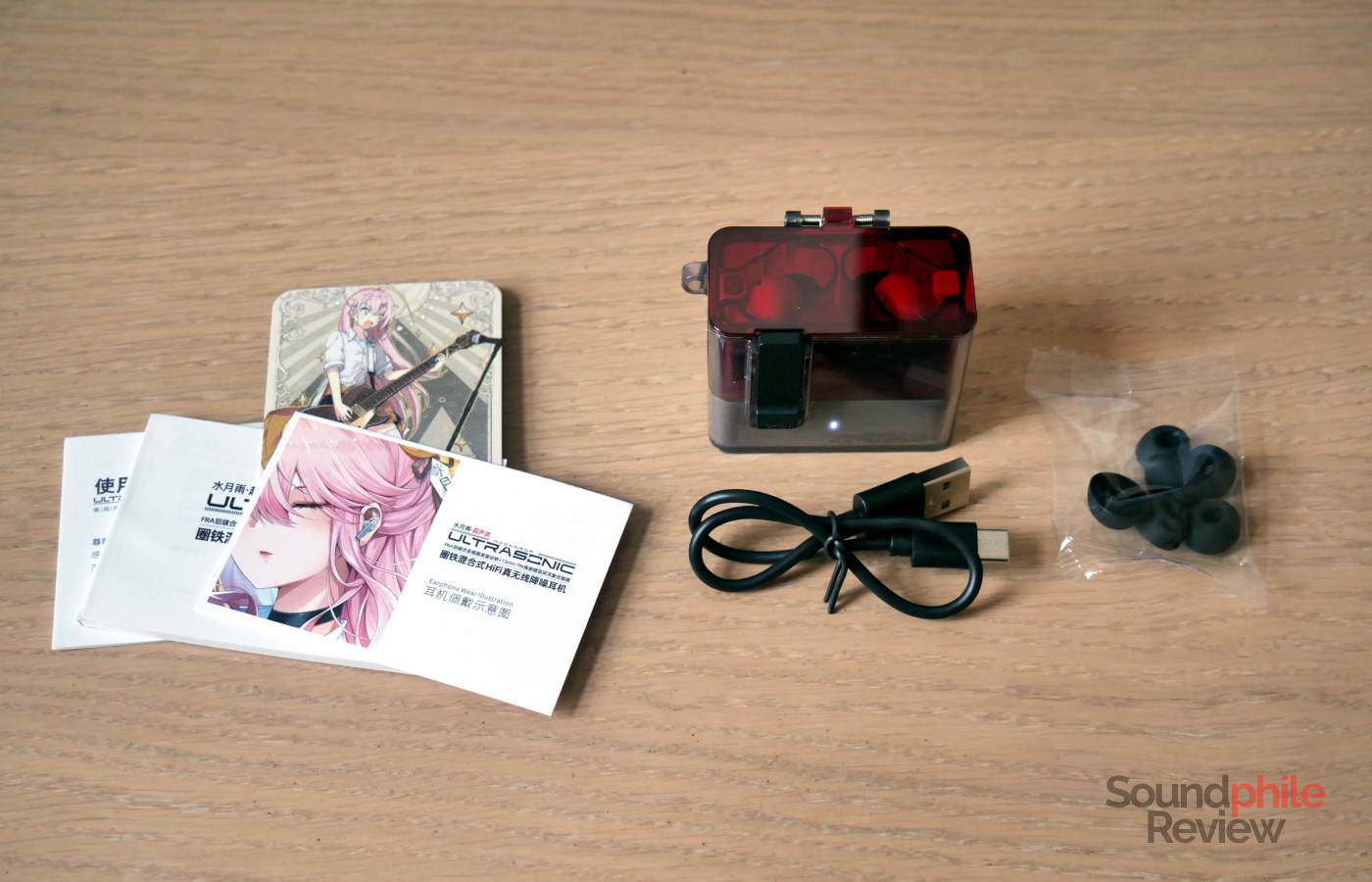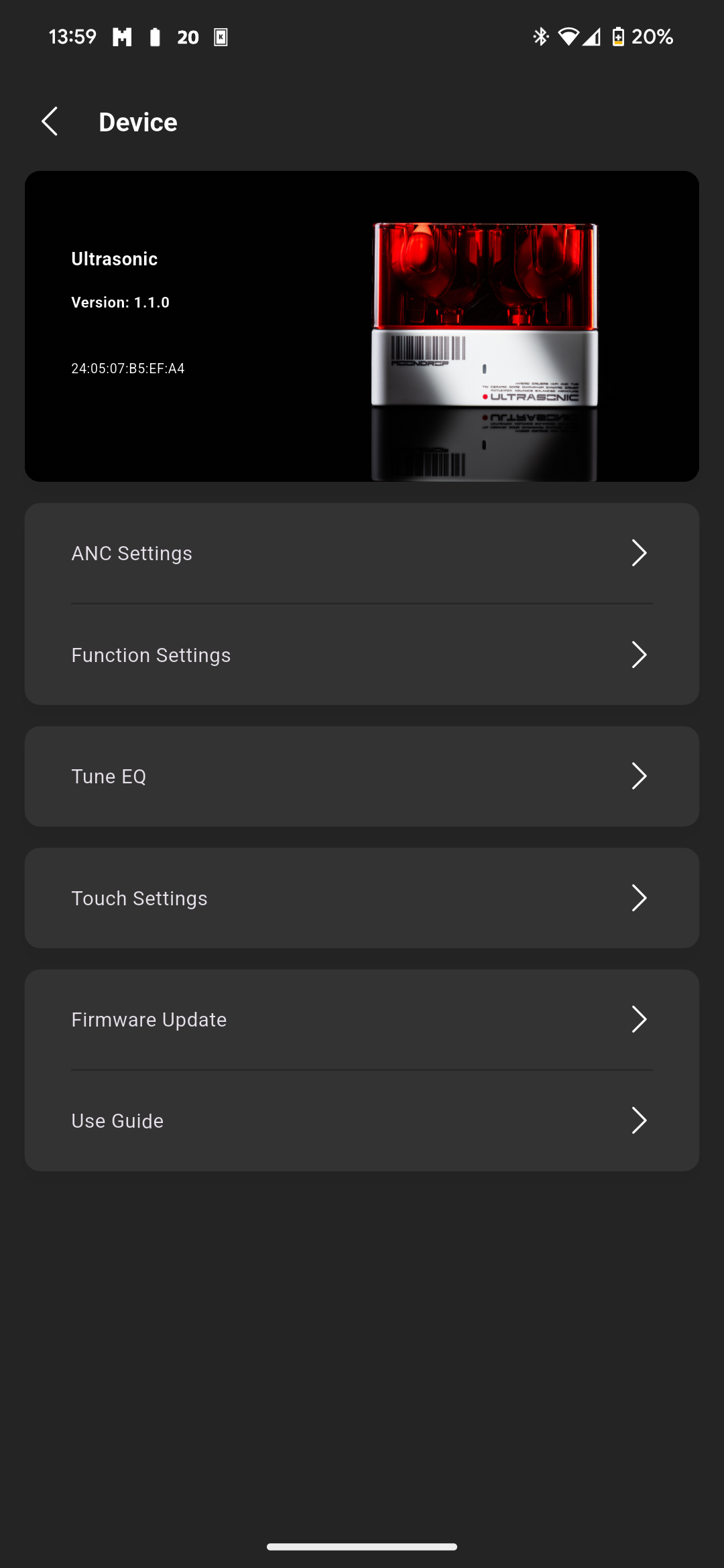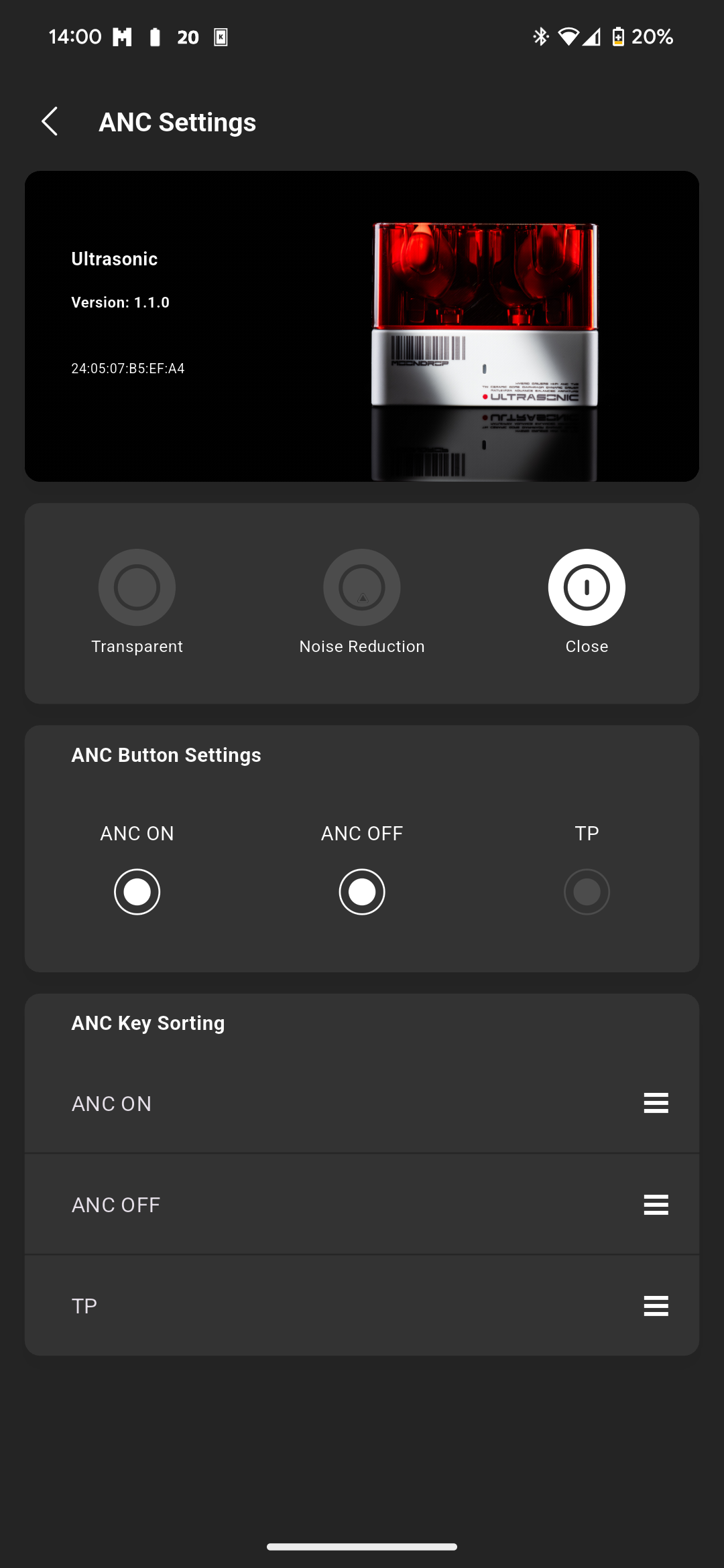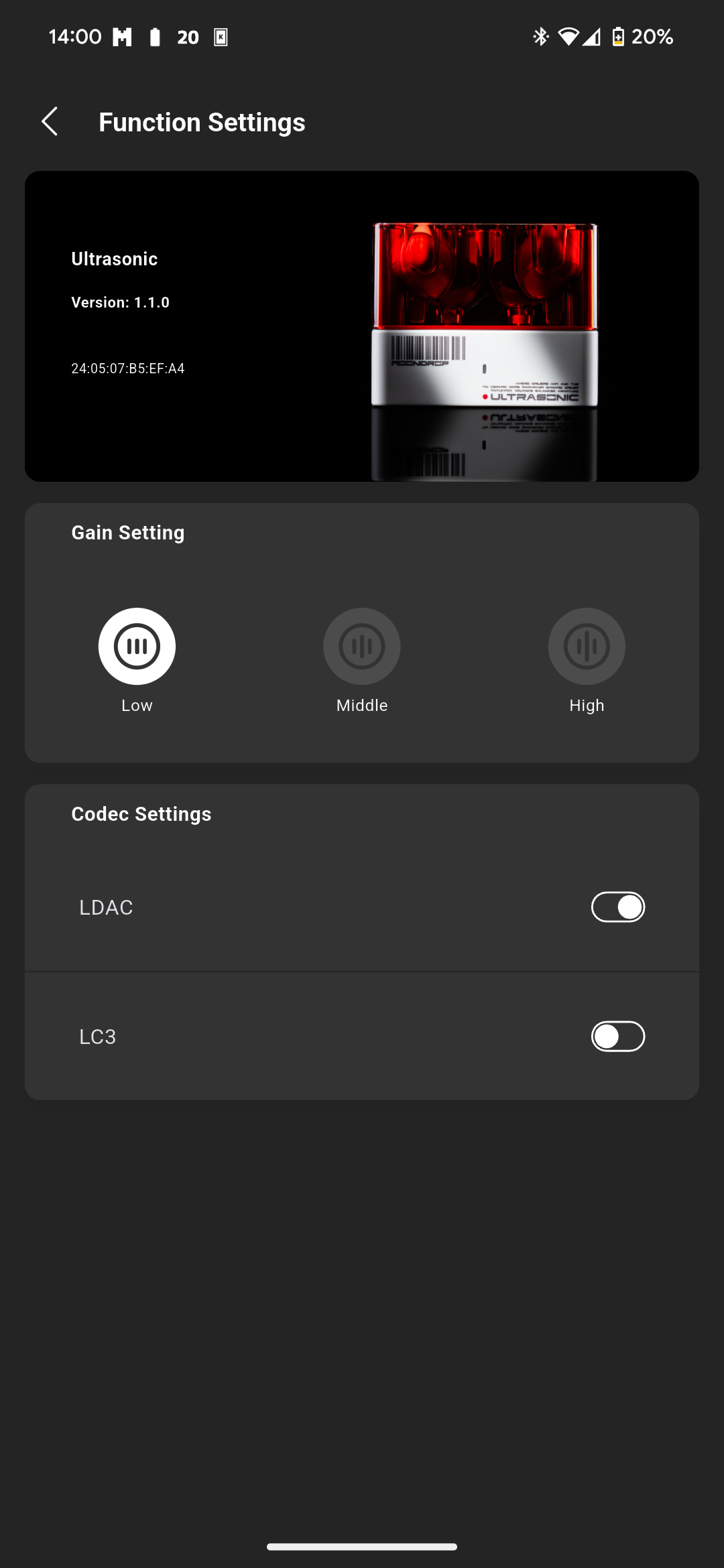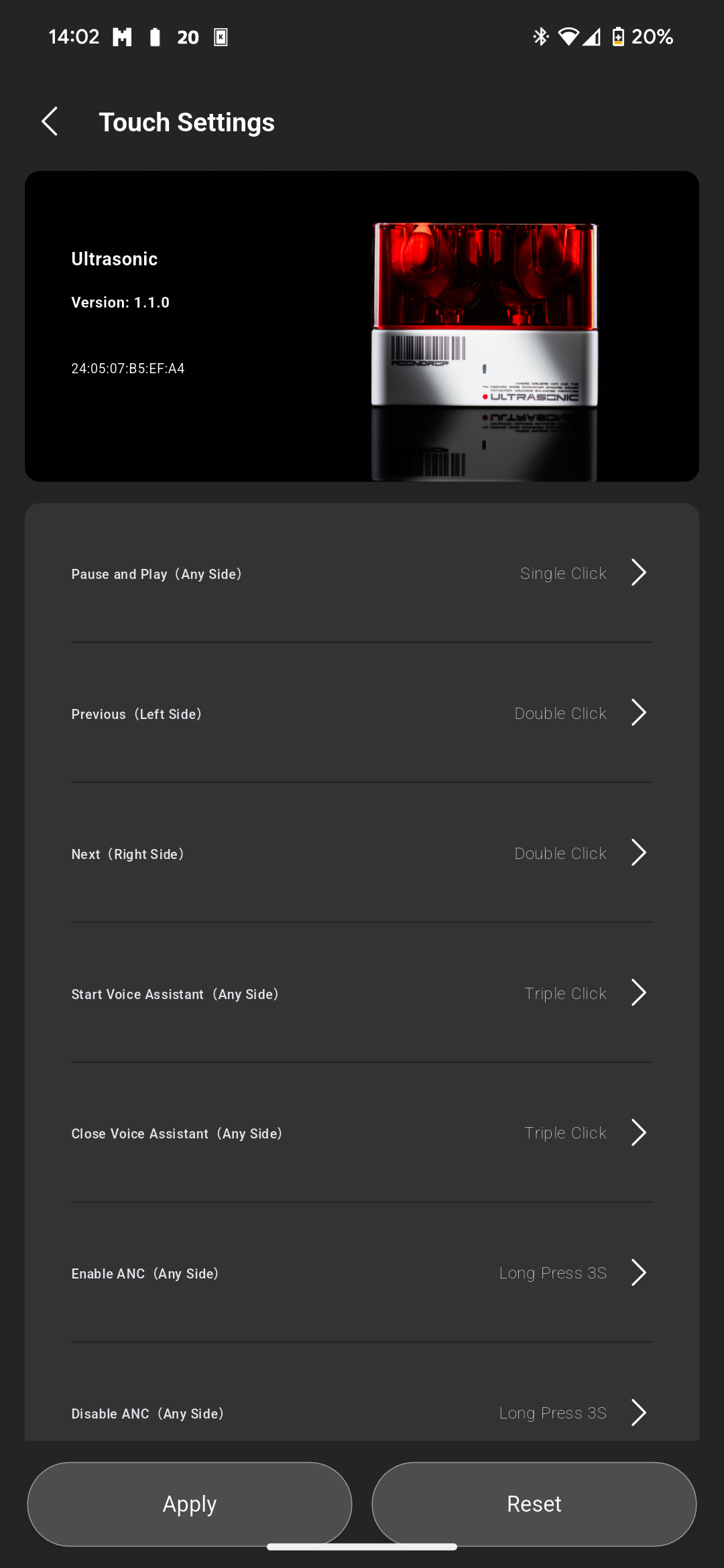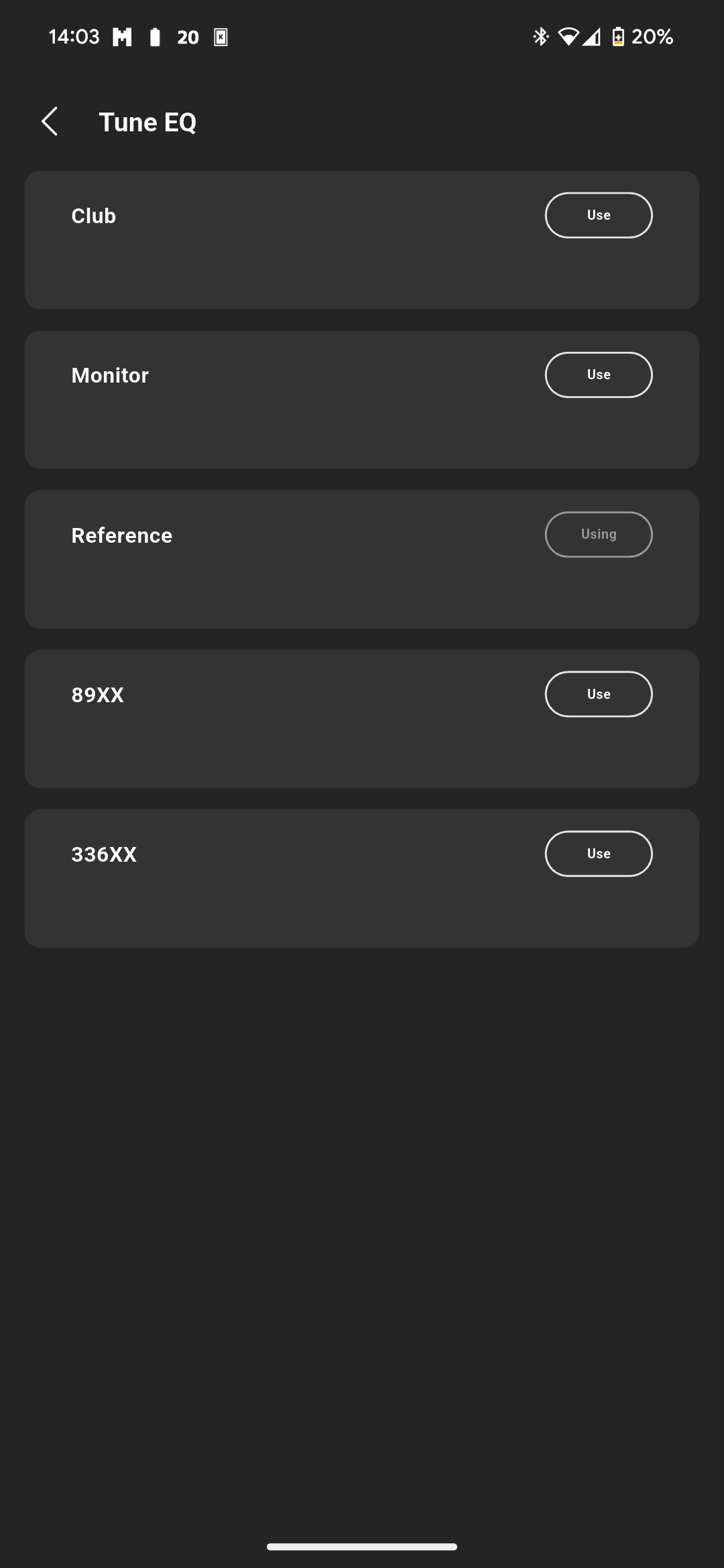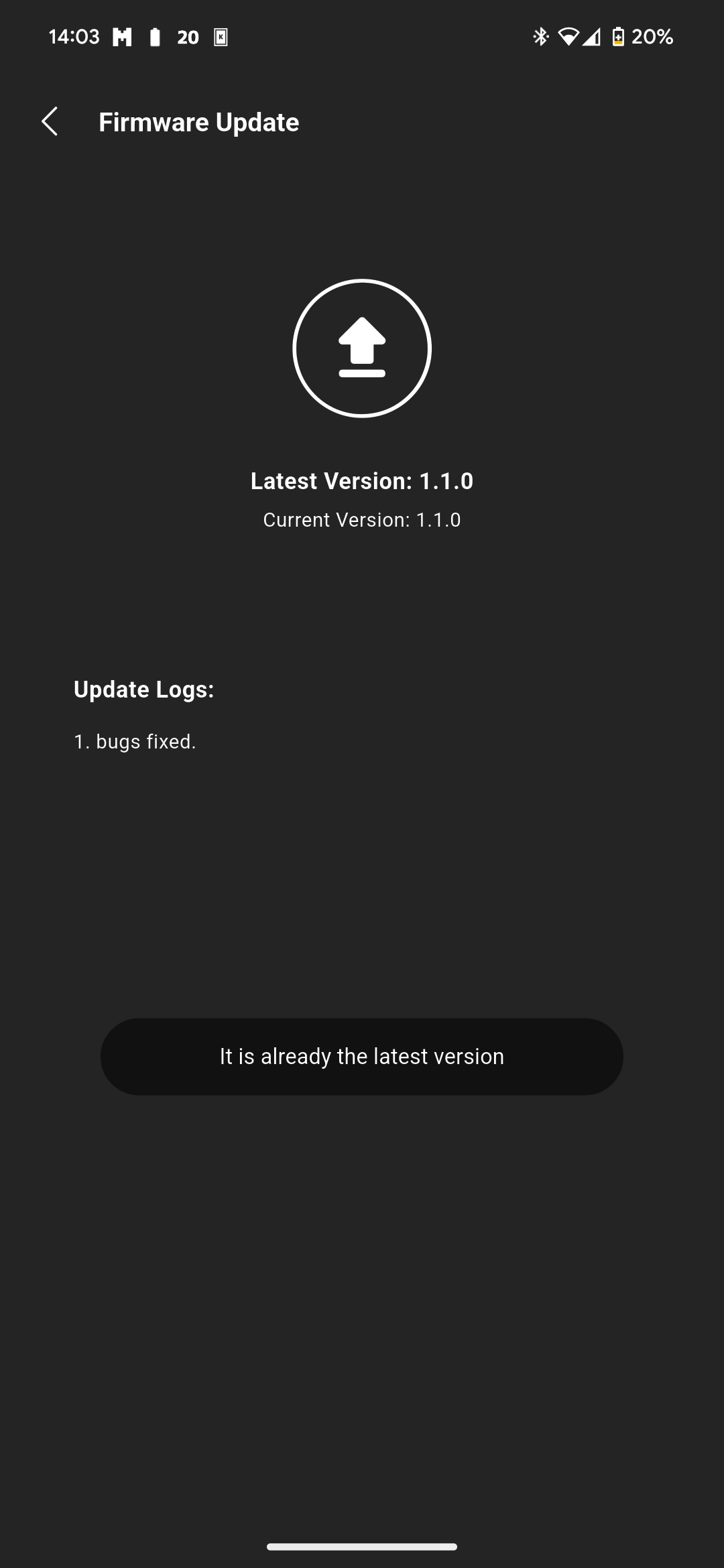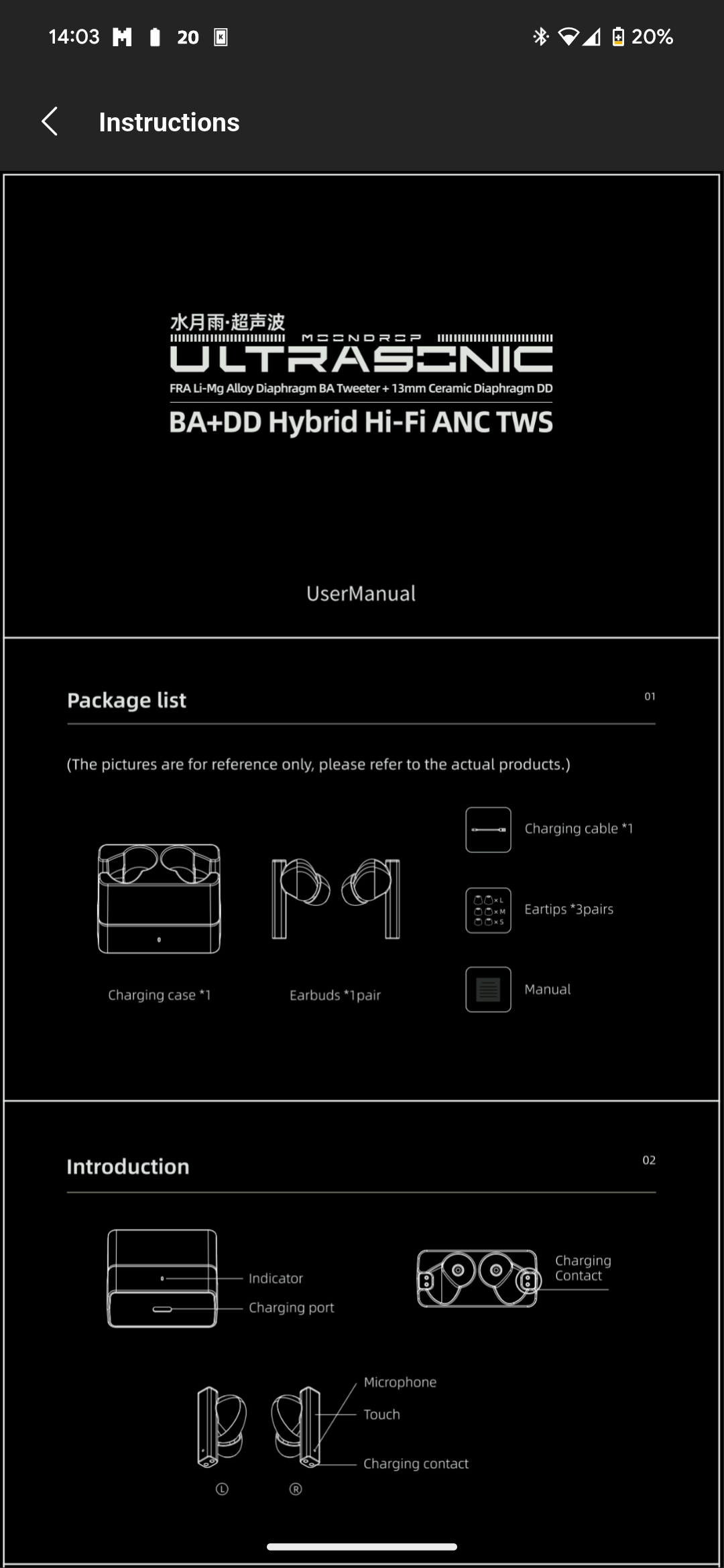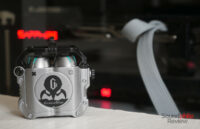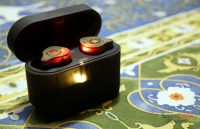Moondrop has been the darling of the head-fi world for a while now and this love story is still going on. One thing they have been doing lately is to launch products with a somewhat retro-inspired vibe, and the new Moondrop Ultrasonic are definitely in that camp. With their half-transparent case (in the sense that half is transparent, half is not), they have a ’90s-like design which is definitely retro, while still being futuristic.
Disclaimer: I received a free unit from Shenzhen Audio for the purpose of this review. The Moondrop Ultrasonic retails for $74.99. Additional info on the official website.
TL;DR: recap
| Pros |
Cons |
| + Fantastic, retrofuturistic case design
+ Good comfort + Decently balanced stock tuning; more presets available + Well-made companion app + Great value |
– Almost no passive isolation
– Slight hiss – Volume steps are too distant – The added silicone case has practical issues |
Rating: 8/10
Packaging & Accessories
The packaging includes the earphones themselves with their charging case, a set of silicone eartips in three sizes, as well as a case for the case, a USB-A to USB-C cable and a manual. The case for the case, however absurd that statement sounds, is meant to protect the charging case from scratches and other damage, and it also provides a lid which is otherwise absent.
After unboxing the earphones, I made the horrible mistake of putting the dock-case right into its case, thinking it would be easy to take them out. Well, think again! It took me significant effort to take it out again and I thought on multiple occasions I was about to break the outer case. I’m not sure this design is actually a great idea, and not just for the reason that it’s nigh impossible to take the charging case out once it’s in; it’s also because I don’t really understand the reason behind this choice of making the lid an external accessory, rather than one which is part of the case itself. Also, once the charging case is inside the silicone case, it becomes very difficult to take the earphones out as there is very little space for your fingers to reach the earpieces.
Design & Comfort
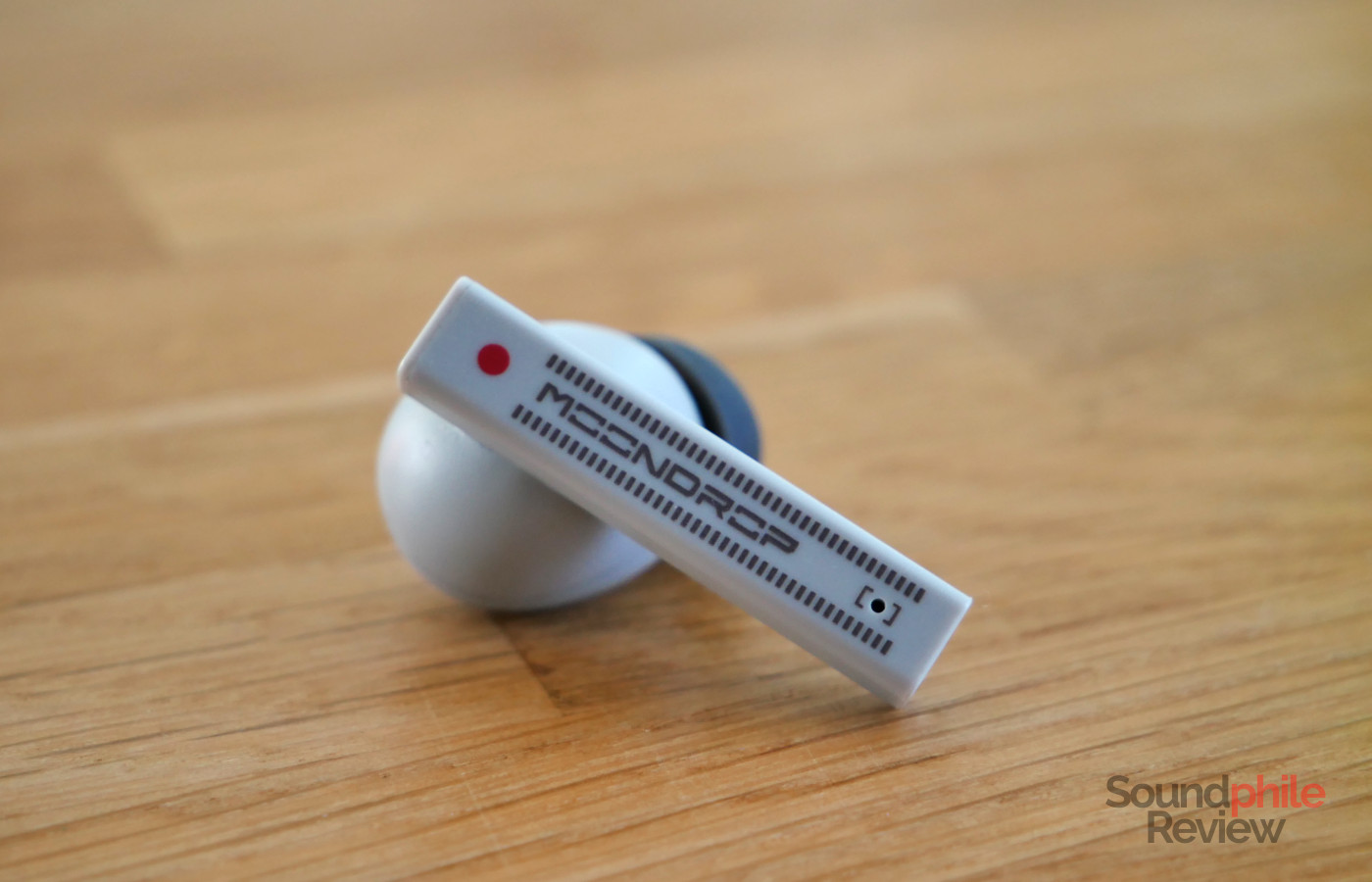
When it comes to the design of the Moondrop Ultrasonic, the earpieces themselves aren’t especially distinctive: they have the usual stemmed design, with the shells made of grey plastic with “Moondrop” written in a sci-fi-like font on the sides. One interesting bit is that the L/R text is printed on the top of the stems, rather than on the sides as it usually is, but it makes sense given the case design.
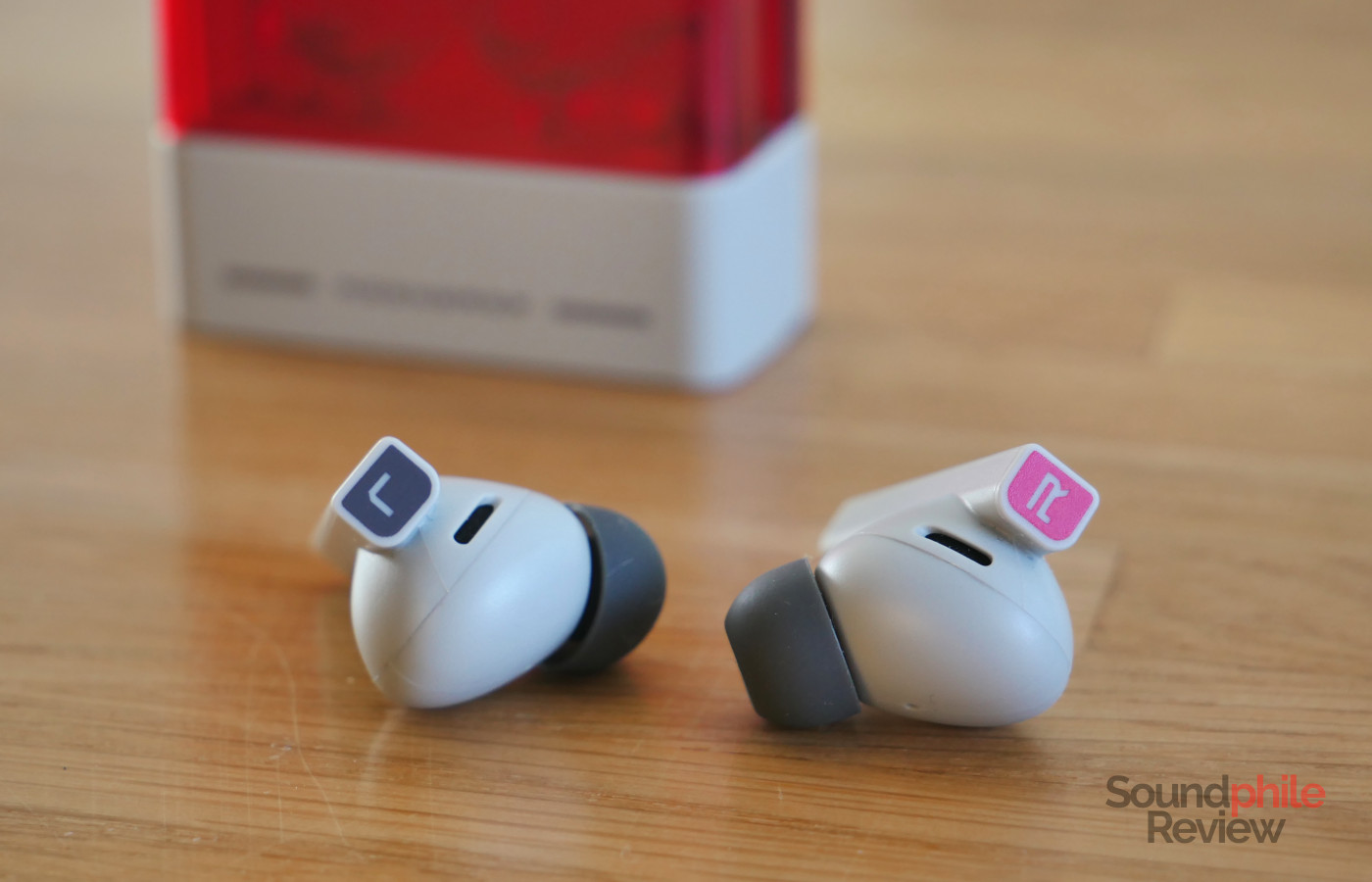
Speaking of design, the most interesting thing is surely going to be the charging case. Its top half is made of transparent red plastic, which makes it really striking and reminds me of the aesthetic from the ’90s. The bottom half is made of the same grey plastic as the earphones, and it has the same type of sci-fi-like graphics. The case is very small and fits into any pocket, but it still has enough space to hold normal-sized eartips, which is great as I found that the stock ones weren’t fitting my ears well. The USB-C connector to charge the earphones and the case is on the bottom.
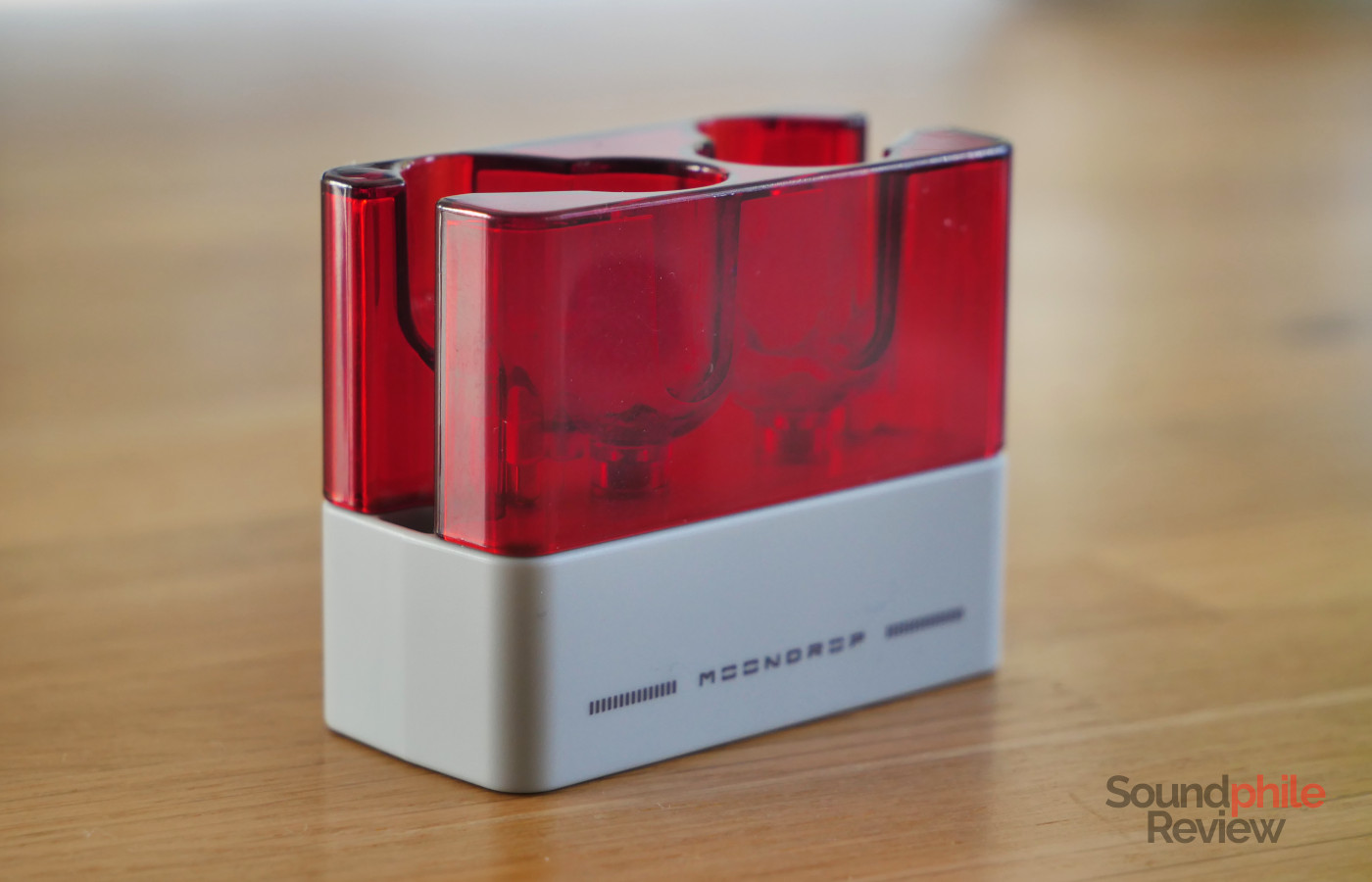
As expected from a company like Moondrop, I can’t find any faults with materials or build quality; the earphones are very well manufactured and assembled, with no flaws I can identify. This holds true for both the earpieces and the case.
Comfort is very good and I can wear the earphones for four hours almost without feeling it; this is due to the shells both being lightweight and having a rounded shape which helps them fit well in the ears. I personally don’t like shallow fits, though, so I find the stock eartips difficult to use and prefer using normal tips (which still fit into the case, thankfully!).
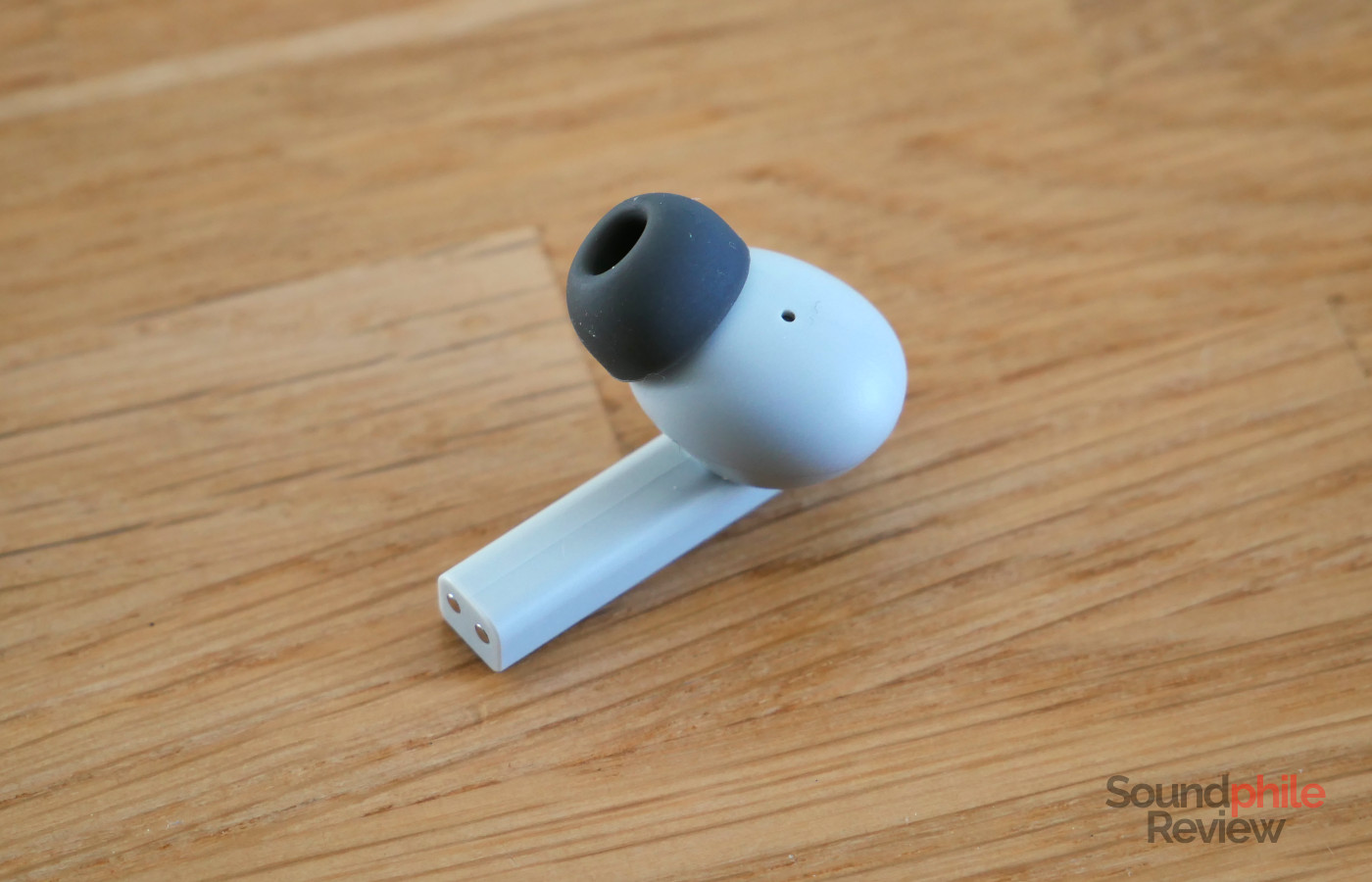
On the other hand, isolation is poor, regardless of what eartips you use. This is only partially compensated by the usage of ANC, as that only reduces the lower frequencies and doesn’t affect the mid and high frequencies. This seems to be caused by a large slit on the outside of the earpieces, possibly used either as a vent or for the ANC microphones.
Extra Features & Battery Life
The Moondrop Ultrasonic features support for the Bluetooth 5.3 standard with the SBC, AAC, LC3 and LDAC codecs – although my devices wouldn’t connect to it using LDAC. This is because you need to enable it in the settings using the app. The reasoning for this is that the codec can have issues, especially if you are in an area with a lot of WiFi and Bluetooth devices, so it is not enabled by default. LC3 is similarly not enabled by default as many devices do not natively support it.
The range of the Ultrasonic is average, meaning I can walk around the house while having them connected to my computer and they will start stuttering only in the farthest corners. The stability is overall very good.
The ANC feature works well on planes and removes a lot of the low-frequency noises, but it doesn’t dent the mids and highs. This means that on a subway train, as an example, you will still hear all of the other people’s sounds – voices as well as annoying videos blasted at volume 11 on their phones. This would be a lot better if there was any form of passive isolation, which is much better at reducing mids and highs. On top of the usual ANC mode, you can find an ambient mode, and you can turn off both features as well.
One interesting and funny feature of the Ultrasonic is that they use a cartoon-like female voice to convey the various messages (power on, power off, pairing, ANC on, ambient mode on…). They call this “Mitsuki-Yuki”. The voice doesn’t speak any words, but rather it makes noises: as an example, when you turn on the ANC, it says “shiiiii”, with a tone like it’s relaxing and getting relief from something – which is kinda intuitively understandable, in the context of the available features, as “ANC on”. It surely comes across as more intelligible than the random noises that many manufacturers opt for!
One thing to note is that I found adjusting volume a bit difficult: the lowest setting was too low, and the one immediately above was too high, even when setting the “low gain” option on the app. While this can be easily fixed on a computer, it is less easy to fix when using a smartphone.
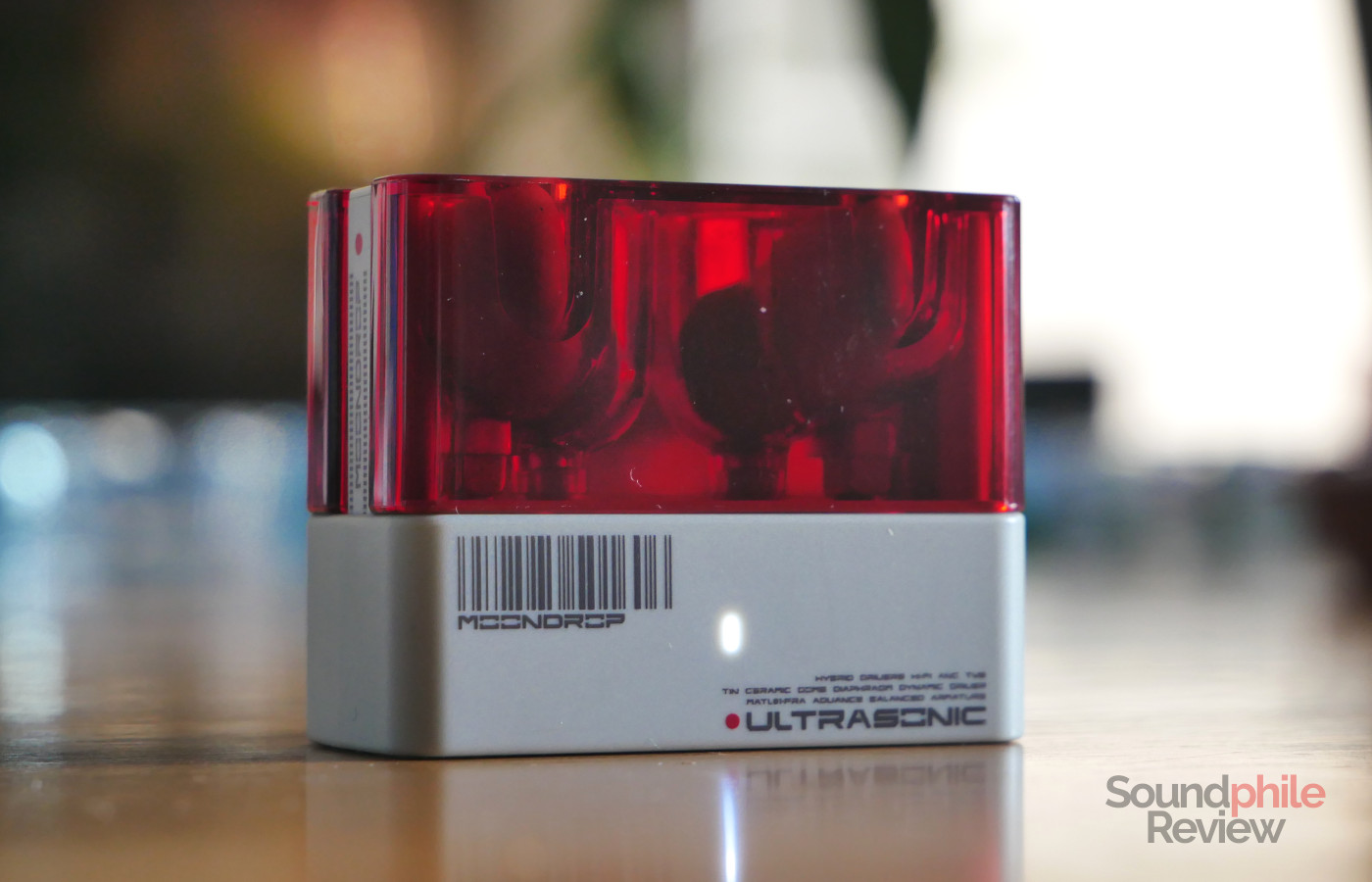
Battery life with ANC turned on is about 6 hours, which is good in absolute terms and in this price range, although it is definitely not market-leading. The case holds enough charge for three additional charges.
Software
Moondrop has an application called Moondrop Link, available for both Android and iOS, through which you can adjust the settings as well as update the firmware. It is well-done and offers all the various options you would need.
The first section is about ANC and allows you to set the level you want to use now, as well as the options you can cycle through with the touch commands and their order. The second section allows you to set the gain as well as to enable or disable the LDAC and LC3 codecs. The third section allows you to set the EQ and choose among five presets (club, monitor, reference, 89XX and 336XX), while the fourth makes it possible to set the touch commands. There are also two options to update the firmware and to view the user manual.
Sound & Specs
I tested the Moondrop Ultrasonic using a variety of sources, including my notebook and my Google Pixel 7 Pro smartphone, using the LDAC codec in both cases.
Moondrop Ultrasonic |
| Frequency response | 5 – 40,000 Hz |
| Impedance | N/A |
| Sensitivity | N/A |
| Bluetooth version | 5.3 |
| Codecs | SBC, AAC, LC3, LDAC |
As the Moondrop Ultrasonic offer various tuning profiles, I have tested them with the default one (“club”, which slightly emphasises bass).
The Ultrasonic use a single 13 mm dynamic driver, which they say has a sapphire-coated dome and a composite diaphragm, as well a single balanced armature, which is produced to Moondrop’s specification with a lithium-magnesium alloy.
There is a constant high-pitched sound playing which is quiet enough that you only hear it in quiet environments, but in those occasions when you can hear it, it quickly becomes fatiguing.
Soundstage is what you would expect from closed-back earphones: while it offers some space, it feels like the instruments are close to the listener and play in a medium-sized space – like a large room. Imaging is good: there are clear left, centre and right positions, as well as intermediate ones, and instruments are placed on the stage each with their own position. Instrument separation is quite good, too, and it’s (nearly) always possible to hear the various parts individually.
Bass is along the lines of what I’d call “neutral”: it is always clearly audible, but it never becomes overbearing; in fact, sometimes it sounds a bit shy and a bit more presence in the mix would be welcome. There is decent depth, but the lowest notes are only accessible if you turn the volume way up as the midrange and treble are a lot further forward. Still, this is significant considering we are talking about TWS earphones that cost less than $100. There is a good level of both speed and detail: the former makes transients convincingly fast, whereas the latter makes smaller nuances emerge quite clearly.
Midrange is definitely the start of the show, especially the upper area: it is the most prominent part of the tuning and it emerges clearly from the mix, irrespective of the track you are listening to. The lower and middle regions are well represented, too, so the Ultrasonic sound great with acoustic and vocal-centric tracks, with female vocals being especially well represented; the emphasis brings some sibilance with it, though. An example of this is Massive Attack’s Risingson, where all the s and t and f are quite emphasised. Tracks like Massive Attack’s Inertia Creeps showcase the great speed and good physicality offered by the drivers, together with the high level of detail.
The emphasis that characterises the upper part of the midrange continues in the lower section of the highs, which are quite energetic and can sometimes feel a bit aggressive. The emphasis fades away in the middle area, and there is then more than decent extension. The high level of detail seen in the midrange continues in the treble area as well.
Final Thoughts
The Moondrop Ultrasonic are very capable TWS earphones which showcase the progress done in this segment in the past few years. Only three years ago it was difficult to find compelling “true wireless” earbuds under $100; now there are several, and the Ultrasonic are a great example of that, with a tuning that will probably satisfy most people. Functionality-wise they bring a lot to the table with the high-quality LDAC and low-power LC3 codecs, as well as with an app that’s well-made and easy to use. They’re not perfect (unfortunately, but also expectedly), but overall they’re very convincing; the only negative aspects are the low passive isolation, the limited range and the volume steps being too distant.
The design is absolutely striking and continues the trend of Moondrop introducing products with great design – such as the Moondrop Discdream Ultra 2. If you are looking for inexpensive TWS earbuds which still sound well and offer decent functionality, while being absolutely gorgeous on top of that, the Moondrop Ultrasonic are definitely worth considering.

